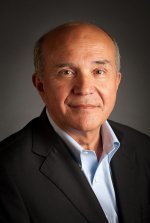Institute for Integrated Catalysis: New Name, New Leader, New Direction
Catalysis research organization renews focus as Johannes Lercher comes on board
(May 2011)
Having established the largest non-industrial catalysis research and development effort in the U.S., a group of scientists at Pacific Northwest National Laboratory is making changes to better focus on key scientific problems that will help secure a strong, clean energy future. This renewed focus will be aimed at developing catalysts that can efficiently make fuels from alternate feedstocks such as biomass and carbon dioxide, can store electrical energy in chemical bonds, and can increase fuel efficiency and cut emissions at the same time.
The shift comes at a time when the country is looking for alternatives to burning fossil fuels, which release greenhouse gases responsible for warming the earth. The renewed focus is marked by a new name for the institute—established in 2005—and by the arrival of a new director, chemist Johannes Lercher of the Technische Universität München in Munich, Germany.
PNNL's renamed Institute for Integrated Catalysis, or IIC, reflects an improved merging of different subfields of catalysis science and engineering, the study and application of substances that accelerate the rates of chemical reactions in many industrially important processes. The IIC also brings together fundamental and applied research as well as theoretical and experimental chemists, allowing for a more efficient and integrated research approach.
The interim director of the former Institute for Interfacial Catalysis, PNNL chemist Chuck Peden, said growing needs for new energy sources have augmented the old IIC and reshaped it into the new one. The new director's expertise will help the group make a greater impact on future energy technologies.
"When we first established the IIC, our strength was in the subfield of catalysis called ‘heterogeneous' where typically the catalyst is a solid, and the chemicals they act upon are gases or liquids," Peden said.
"Now with the push to develop biofuels and other alternative energy sources, we have grown a substantial and internationally recognized effort in what we call molecular catalysis where both the catalysts and the reactions they enable occur within a liquid environment. This effort includes one of DOE's Energy Frontier Research Centers, where IIC chemists are trying to significantly improve on catalysts similar to those found in nature, such as those in plants that convert sunlight and carbon dioxide into chemical energy," he said.
According to Peden, the idea to replace "Interfacial" with "Integrated" came from discussions with Lercher. Not only will the new and improved IIC bring different subfields of catalysis together, but the institute will integrate other aspects of catalysis research as well—such as applied and basic science, and computational and experimental chemistry.
For example, as engineers apply fundamental concepts to real-world applications such as engine exhaust emission control, new basic science questions pop up. And basic research can point out entirely new catalytic chemistry that can be applied to develop unexpected new technologies.
The same back and forth occurs between theoretical chemists—who use computers to provide insight into how reactions proceed—and the experimentalists who design and carry out laboratory studies. Together, theory and experiment create a more complete picture of fundamental reactions than either one alone.
The new director, Johannes Lercher, is currently a chemistry professor at TUM and the editor of a leading chemistry journal, The Journal of Catalysis. He will split his time between Richland, Wash. and Munich, Germany, which will also help PNNL researchers further develop international collaborations.
"TUM has one of the largest catalysis efforts in Europe. The appointment of Prof. Lercher as IIC director allows us to enhance and expand on some collaborations that we've initiated with several TUM faculty," said Peden. "Through these and other international research collaborations, the IIC has advanced the science and technology of catalysis while also cementing its reputation as a world-leading catalysis research center."
For Lercher, being director of the IIC will give him the opportunity to work with a large applied catalysis research group that is well beyond what is found in universities, where the emphasis is more on fundamental science and the training of students. In addition, the IIC has a close working relationship with EMSL, DOE's Environmental Molecular Sciences Laboratory on the PNNL campus, and other DOE user facilities.
"Research advances by peer collaboration," said Peden. "In the IIC at PNNL, we work in multidisciplinary teams of fully trained researchers. We have many years of experience and we already have a large research effort that includes both fundamental science and applied catalysis engineering. Johannes can make a real impact on that."
That is, an impact with a capital I.

